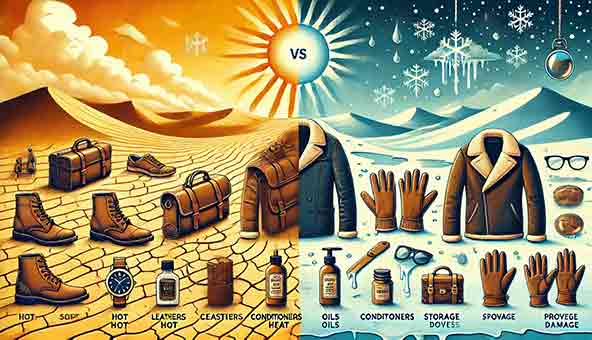
Why Are Motorcycle Helmets Important?
, by Syed Khawar Bukhari, 15 min reading time

, by Syed Khawar Bukhari, 15 min reading time
Millions of devotees throughout the world are drawn to motorcycles because of their distinctive combination of efficiency, excitement, and freedom. There are risks associated with this thrilling kind of transportation, though. Of all the safety gear offered to motorcycle riders, arguably none is more important or contentious than the helmet. This article explores the history, use, efficacy, and current controversy surrounding motorcycle helmets, highlighting its multidimensional significance.
We'll look at statistical evidence, discuss common arguments for and against helmet wear, and explore how technology improvements may shape the future of head protection for motorcycle riders as we negotiate the complex world of motorcycle safety. Upon completion of this investigation, readers will possess a thorough comprehension of the reasons why motorcycle helmets are not only crucial, but also have the potential to save lives for those who choose to ride.
The history of motorcycle helmets dates back nearly as far as the creation of motorbikes. As motorcycles became more and more common in the early 1900s, head protection became more and more important. The original motorcycle helmets were essentially leather hats with very little impact protection.
An important turning point occurred in 1935 when T.E. Lawrence of Arabia, as he was more popularly known, passed away from brain injuries he received in a motorbike accident. Hugh Cairns, a neurosurgeon, was inspired by this terrible incident to investigate the potential safety benefits of motorcycle helmets. The work of Cairns established the framework for contemporary helmet design and emphasized the vital importance of sufficient head protection.
The creation of helmets for military use during World War II indirectly aided in the advancement of motorcycle helmet technology. Motorcycle helmets have become stronger and more efficient as a result of the adaptation of materials and design principles utilized in war helmets for civilian usage.
The 1950s and 1960s witnessed more advancements in rider safety, culminating in 1968 with Bell Helmets' production of the first full-face helmet. Due to their increased vulnerability in motorcycle accidents, the face and jaw were given unparalleled coverage by this design.
Over the course of the 20th century, helmet design saw further development. More knowledge about impact biomechanics and the use of novel materials like carbon fibre and sophisticated polymers have led to the development of helmets that are stronger, lighter, and more comfortable than ever.
The helmets used on motorcycles today are the result of many years of development, testing, and study. They stand at a critical nexus between biomechanics, materials science, and safety engineering, all directed at safeguarding the rider's most important organ in the case of an accident.
To fully appreciate the significance of motorcycle helmet protection, one must comprehend the underlying principles. Contemporary helmets are intricate pieces of safety gear intended to handle various impacts and injuries.
A motorcycle helmet's main purpose is to shield the rider's head in the event of an accident. It accomplishes this via numerous crucial mechanisms:
The helmet's exterior shell, which is usually composed of composite materials like carbon fiber or fiberglass or tough polymers like polycarbonate, is intended to disperse impact energy over a wider surface. This lessens the force that is concentrated in a single area of the skull.
Expanded polystyrene foam (EPS) is layered underneath the tough outer shell. When this material collides, it compresses and absorbs a large amount of the energy that would have otherwise gone to the rider's head.
In the case of a collision, the helmet serves as a physical barrier to keep the rider's head from making contact with other objects. This is especially crucial in avoiding contusions and abrasions.
In order to lessen the influence of rotational forces on the brain during an angled impact, several contemporary helmets are equipped with technologies. A tiny degree of movement between the outer shell and the inner lining is permitted by systems like MIPS (Multi-directional Impact Protection System), which can lessen the rotational forces that are conveyed to the brain.
The rider's jaw and chin are shielded by full-face and modular helmets. Additionally, the visor protects the eyes from insects, debris, and wind—all of which can distract riders or injure them.
Helmets are a great tool for lowering the danger of head injuries, but it's vital to remember that they are one-time use only. During an impact, the EPS foam compresses and loses its protective qualities. For this reason, even in cases when there isn't any obvious damage, it's imperative to replace a helmet following a serious collision.
Motorcycle helmets are available in a variety of designs, each with varying degrees of protection and appropriateness for specific riding styles. Among the primary kinds are:
Different helmet types provide varying levels of comfort, protection, and style. The decision is frequently influenced by the kind of motorcycle, the rider's riding style, and personal tastes. Full-face helmets, on the other hand, continuously provide the best protection in the majority of accident scenarios from a safety standpoint.
The regulations governing motorcycle helmets differ greatly between nations and even within them. For instance, state legislatures in the United States enact helmet laws, resulting in a disorganized set of rules:
By 2024, all motorcycle riders must wear helmets according to regulations enacted in 18 states and the District of Columbia.
29 states have legislation mandating some motorcyclists to wear helmets, usually if they are under a certain age (usually 18 or 21) or if their insurance coverage falls short of a predetermined threshold.
Motorcyclists of all ages are not required to wear helmets in Illinois, Iowa, or New Hampshire.
Worldwide, a large number of nations have universal helmet regulations. For example, motorcycle helmet use is mandated in every member state of the European Union for both riders and passengers. Similar laws requiring helmet use are in place throughout nations like Canada, Australia, and Japan.
It is noteworthy that helmet regulations are frequently modified, and there is continuous discussion concerning how to strike a balance between individual liberties and public safety in many places. While opponents frequently point to individual freedom and choice as counterarguments, proponents of universal helmet legislation contend that their regulations save lives and lower healthcare costs.
Several research and empirical evidence have established the efficacy of motorcycle helmets in lowering injuries and fatalities. The following are some important statistics:
These figures continuously show that wearing a helmet lowers the chance of fatalities and serious injuries from motorbike accidents. Helmets are quite useful, but it's crucial to remember that they cannot prevent all accidents or fatalities. They work best when combined with other safety precautions including wearing the appropriate riding gear, practicing defensive driving, and obeying traffic regulations.
There are still arguments made against obligatory helmet laws and even against voluntary helmet use, despite the overwhelming evidence in favor of helmet use. The following are some typical objections and their refutations:
Despite these ongoing debates, the vast majority of scientific research affirms that helmet wearing is an essential safety precaution for motorcycle riders. Many of these issues can be resolved with the help of advancements in helmet design, statistics communicated clearly, and education about the advantages of wearing helmets.
The fit and condition of a motorcycle helmet have a major impact on its efficacy. In the case of an accident, a poorly fitted or badly maintained helmet might not offer enough protection.
Ideal Fit:
When the helmet is on, shake your head to check the fit. It must move in tandem with your head.
A common error made by riders is selecting a helmet that is too big for them to comfortably wear. Recall that a new helmet should fit snugly and will usually "break in" a little bit with time.
In addition to guaranteeing the helmet's efficacy, proper upkeep and care also increase its longevity, offering greater return on safety investment.
Technological advancements in motorcycling helmet design are constantly improving usefulness, comfort, and safety. Among the noteworthy developments are:
The inner layer of the helmet can rotate somewhat upon impact thanks to the Multi-Directional Impact Protection System (MIPS) technology, which lessens the rotational forces on the brain.
Smart helmets: These include features like heads-up displays (HUDs), Bluetooth connectivity, and integrated cameras. To lessen wind noise, some even have noise-cancelling technology.
These developments not only increase safety but also solve many of the concerns with comfort and convenience that have prevented some riders from wearing helmets.
It is impossible to exaggerate the value of motorcycle helmets. With the ability to significantly lower the danger of fatal head injuries and serious brain trauma, they stand as the most effective safety equipment that motorcyclists may use. Helmets save lives, according to abundant and convincing statistical evidence.
Even if there are still arguments against wearing helmets, the overwhelming proof of their usefulness has mostly overshadowed these arguments. Although personal freedom is important, it must be weighed against the needs of the general public, public safety, and the wider societal effects of avoidable harm and death.
Motorcycle helmets are getting more features and more comfortable as well as safer as technology develops. With these enhancements, many of the long-standing arguments against helmet use are addressed, making it simpler than ever for riders to put safety first without compromising comfort or flair.
In the end, wearing a helmet is a responsibility rather than just a personal option. To oneself, to those they care about, and to society at large. Riders who choose to wear a helmet that fits properly and is kept in good condition significantly improve their odds of surviving an accident and avoiding serious injuries.
Helmets will surely continue to be essential when we consider motorcycle safety in the future. A safer riding environment is a result of ongoing research, technology developments, and education initiatives. Still, the most crucial element is the individual rider's choice to put safety first by donning a helmet at all times.
Let the motorcycle helmet serve as a symbol of responsible riding in the thrilling world of motorcycling, where the promise of the wide road beckons. This signifies a dedication to enjoying the freedom of two wheels while taking all reasonable precautions to ensure a safe return home after each and every ride.


